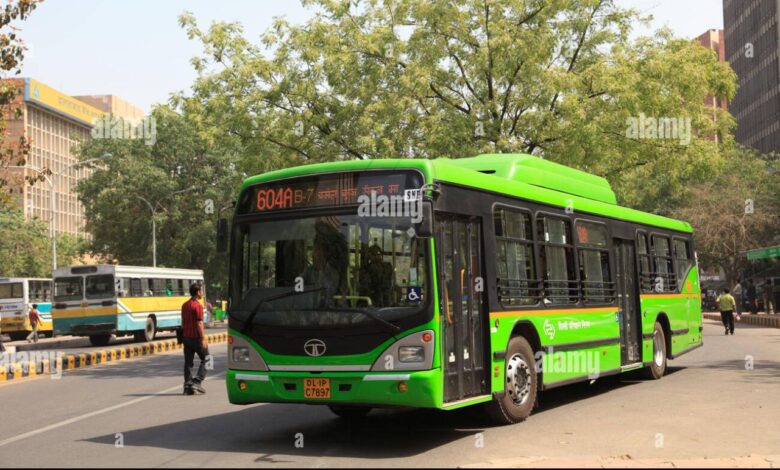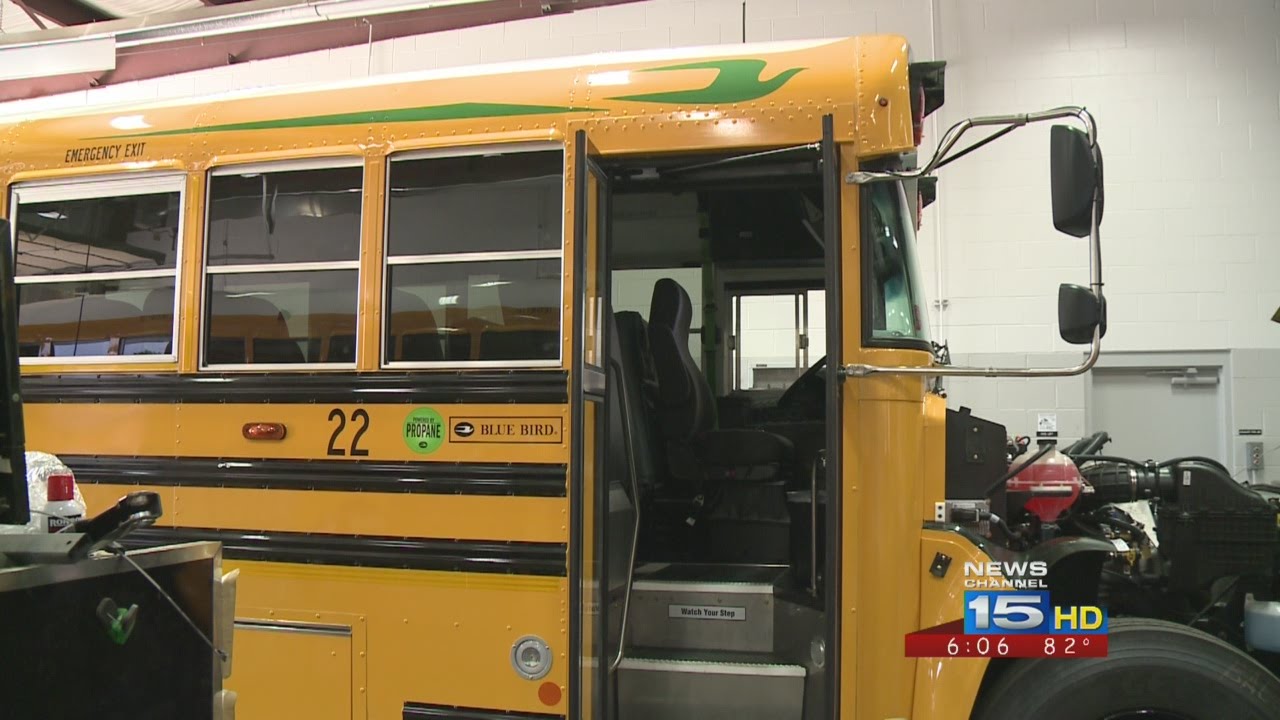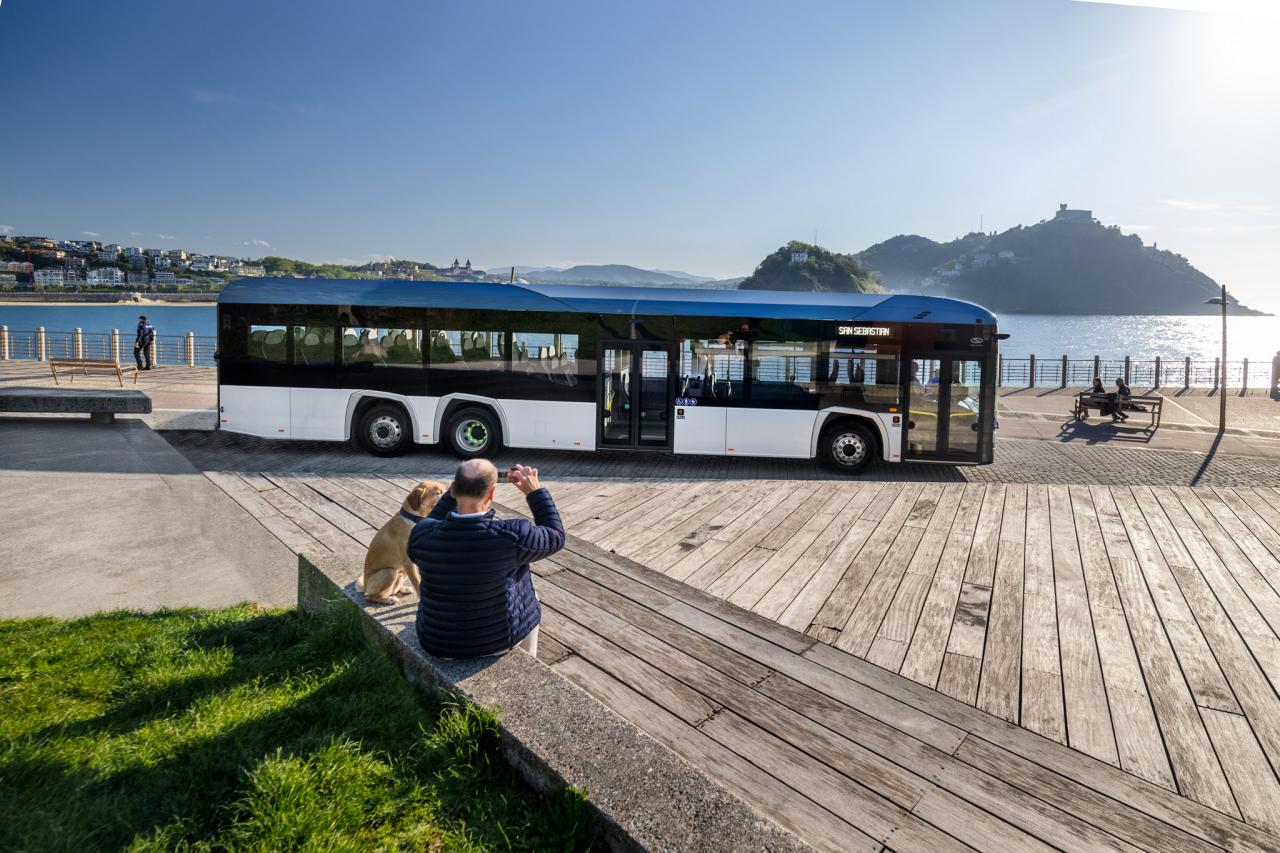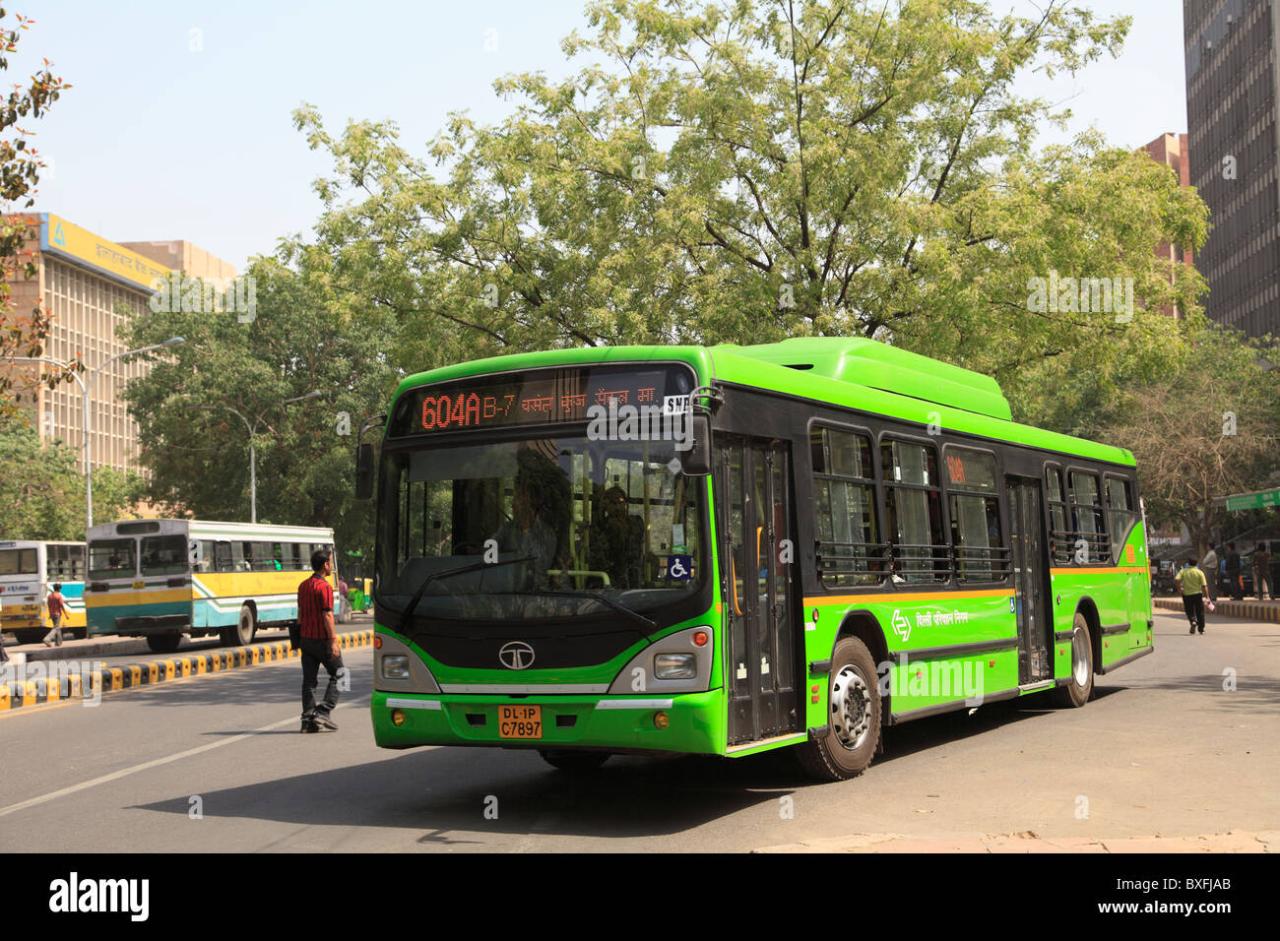
Bus Industry Study Buses Eco-Friendly
Bus industry study finds buses are kindest to the environment, revealing surprising insights into their environmental impact. This study delves into the details of fuel consumption, emissions, and the overall carbon footprint of various bus types, from diesel to electric and hybrid models. It also examines the technological advancements in the industry, focusing on alternative fuels and electric bus technology.
Furthermore, the study considers infrastructure needs, government policies, public perception, and case studies of successful sustainable bus programs around the world. Ultimately, the study projects future trends and potential scenarios for the bus industry, highlighting the role of innovation in driving the industry towards greater sustainability.
The research meticulously analyzes the environmental impact of different bus types, comparing them to other modes of transportation like cars and trains. Tables and charts visually represent the key findings, showcasing the environmental metrics of various bus types, their fuel efficiency, emissions, and charging times. This provides a clear and comprehensive picture of the environmental advantages of buses.
Environmental Impact of Buses

Buses, a crucial part of public transportation, are often overlooked in discussions about environmental sustainability. However, their impact on the planet, from fuel consumption to emissions, is significant. Understanding this impact is crucial for developing effective strategies to make public transport greener and more sustainable.The environmental footprint of buses varies greatly depending on several factors, including the type of bus, the fuel source, and the efficiency of the vehicle’s operation.
This analysis delves into the intricacies of bus emissions, contrasting different types of buses and their respective impacts. By understanding the complexities of bus operations, we can identify opportunities to minimize their environmental burden.
Fuel Consumption and Emissions
Buses, like any vehicle, consume fuel and produce emissions. The amount of fuel consumed and the types of emissions produced are directly related to the bus’s engine type and operational efficiency. Diesel buses, for example, generally have higher fuel consumption rates than electric or hybrid buses. This higher fuel consumption translates to a larger carbon footprint. The emissions themselves, including greenhouse gases like carbon dioxide (CO2), nitrogen oxides (NOx), and particulate matter, contribute to air pollution and climate change.
Measuring these emissions accurately is critical for developing strategies to reduce their impact.
Wow, a new study shows buses are surprisingly eco-friendly! It’s great to see the bus industry making strides towards sustainability. Thinking about all the fun things you can do while exploring Europe, like an ample activities rhine cruise with disney , it’s reassuring to know there are responsible transportation options available. Hopefully, this trend will continue and make traveling by bus even more appealing and environmentally conscious in the future.
Different Bus Types and Their Impacts
Various types of buses exist, each with different design features and operational characteristics. These differences significantly affect their environmental performance. Traditional diesel buses, the most common type in many regions, are generally less fuel-efficient than newer technologies. Electric buses, on the other hand, produce zero tailpipe emissions during operation, although the energy source used to charge them can impact their overall carbon footprint.
Hybrid buses, combining diesel or gasoline engines with electric motors, represent a middle ground, attempting to balance fuel efficiency and emissions reduction.
Methods of Powering Buses
The method of powering a bus directly influences its environmental impact. Diesel buses rely on fossil fuels, producing substantial greenhouse gas emissions. Electric buses, powered by batteries charged from renewable sources, can significantly reduce emissions, especially when the electricity generation is sustainable. Hybrid buses, incorporating both electric and traditional engine systems, offer a compromise between efficiency and emissions, but their effectiveness depends on the specific hybrid configuration and operational patterns.
Recent studies highlight buses as incredibly eco-friendly transportation. This aligns perfectly with the monumental effort to salvage the Concordia, an ambitious undertaking. The project to raise the Concordia, detailed in this fascinating article attempt to raise concordia is ambitious salvage project , demonstrates a similar commitment to careful and responsible recovery, mirroring the focus on environmentally conscious transport solutions.
Ultimately, both endeavors underscore the potential for innovative solutions in tackling environmental challenges, making buses a clear winner in the quest for sustainable travel.
Comparison with Other Transportation Modes
Comparing the environmental impact of buses with other modes of transportation is essential for evaluating their role in a sustainable transportation system. While buses generally have a lower per-passenger carbon footprint than individual cars, their impact compared to trains depends on factors such as route length, passenger load, and the efficiency of the respective modes. The environmental benefits of buses are often amplified in densely populated areas where they can reduce the overall number of vehicles on the road, thus minimizing congestion and the resulting emissions.
Environmental Impact Metrics of Various Bus Types
The following table provides a comparative overview of the environmental impact metrics of different bus types.
So, this recent study on the bus industry really highlights how eco-friendly buses are becoming. It’s fantastic news for the environment, and a great alternative to other transport options. Meanwhile, if you’re looking for some amazing seafaring adventures, check out the ample diversions on Louis Cristal Aegean sailing here. Hopefully, the next step in green transportation will involve incorporating more eco-friendly features on cruise ships, so we can have both the pleasure of travel and a healthier planet! This bus industry study is definitely pointing us in the right direction for sustainable travel.
| Bus Type | Fuel Type | Emissions (g/km) | Energy Efficiency (kWh/km) |
|---|---|---|---|
| Diesel Bus | Diesel | 250-400 | 15-25 |
| Electric Bus | Electricity (Renewable) | 0-5 | 10-15 |
| Hybrid Bus | Diesel/Electric | 150-300 | 10-20 |
Note: Emissions and efficiency figures are approximate and can vary based on specific vehicle models, operating conditions, and fuel sources.
Technological Advancements in Bus Industry
The bus industry is undergoing a rapid transformation, driven by a growing awareness of environmental concerns and the need for more efficient transportation solutions. Modern buses are increasingly incorporating advanced technologies, aiming to reduce their environmental footprint and improve overall performance. This shift is crucial for cities and communities seeking sustainable and reliable public transportation options.The quest for cleaner and more efficient public transport has spurred significant innovation in bus design and operation.
This includes the integration of advanced technologies, alternative fuels, and a greater focus on optimizing operational strategies.
Alternative Fuels and Their Impact
The transition to alternative fuels is a key component of reducing the environmental impact of buses. Diesel, while historically dominant, is increasingly being challenged by cleaner alternatives. Natural gas, biodiesel, and electricity are prominent examples, each offering unique advantages and disadvantages in terms of environmental performance and operational practicality. The adoption of these fuels has varied across different regions and countries, often influenced by local infrastructure, regulations, and economic factors.
Natural gas, for instance, can offer a readily available and relatively clean alternative to diesel in some contexts.
Electric Bus Technology
Electric buses are gaining significant traction as a viable alternative to traditional diesel-powered buses. The increasing availability of charging infrastructure and the continued development of battery technology are driving this trend. Electric buses offer reduced emissions, quieter operation, and lower maintenance costs in some cases, but challenges remain in terms of charging infrastructure, battery lifespan, and overall cost-effectiveness.
Different Types of Electric Bus Technologies
| Technology Type | Charging Time | Range | Maintenance Costs |
|---|---|---|---|
| Battery Electric Buses (BEVs) | Variable, from hours to overnight | Typically 150-250 km (90-155 miles) on a single charge | Generally lower than traditional diesel buses, especially for routine maintenance. Battery replacement costs can vary significantly depending on the battery technology and lifespan. |
| Plug-in Hybrid Electric Buses (PHEVs) | Variable, but shorter than BEVs, often overnight | Can achieve a longer range than BEVs due to the internal combustion engine, potentially exceeding 300 km (186 miles) | Maintenance costs often fall between BEVs and traditional diesel buses, depending on the frequency of hybrid use. |
| Fuel Cell Electric Buses (FCEVs) | Typically 15-30 minutes | Potentially higher range than BEVs due to hydrogen fuel cell efficiency | Maintenance costs are generally lower than BEVs for routine maintenance, but hydrogen refueling infrastructure and the specialized nature of fuel cell components can lead to higher costs in the long run. |
The table above illustrates the key differences between various electric bus technologies, highlighting charging times, ranges, and maintenance costs. Each technology presents a unique set of advantages and disadvantages that need to be considered in specific contexts.
Infrastructure and Policy Considerations: Bus Industry Study Finds Buses Are Kindest To The Environment
The shift towards sustainable transportation necessitates a robust infrastructure and supportive policies. Simply introducing eco-friendly buses isn’t enough; the entire system needs to adapt. This involves crucial considerations for physical infrastructure, governmental incentives, and the practicalities of charging electric buses. Effective implementation hinges on a proactive approach addressing potential challenges.The adoption of environmentally friendly buses is not just about replacing existing models; it requires a complete overhaul of the existing infrastructure and the implementation of supportive policies.
This transformation requires careful planning, investment, and a comprehensive understanding of the challenges and opportunities involved.
Infrastructure Needed to Support Eco-Friendly Buses
Efficient bus systems require dedicated infrastructure. This includes upgraded bus stops equipped with charging stations for electric buses, dedicated bus lanes to reduce congestion, and optimized routes considering traffic patterns and demand. Improved maintenance facilities are also essential for the upkeep of these advanced vehicles.
Role of Government Policies and Incentives
Government policies play a critical role in encouraging the transition to sustainable transportation. Incentives such as tax breaks for the purchase of electric buses, subsidies for charging infrastructure development, and regulations mandating a certain percentage of green buses in public fleets are vital. Such measures can significantly lower the financial barrier for adopting cleaner technologies.
Importance of Charging Infrastructure for Electric Buses
Electric buses, while environmentally friendly, rely on readily available and strategically placed charging infrastructure. The availability of charging stations along routes is crucial for ensuring uninterrupted service. The location and capacity of these charging stations must align with the frequency of bus routes and the operational needs of the transit system. For example, strategically located charging stations at bus depots can support overnight charging and maintenance, optimizing fleet efficiency.
Potential Challenges and Barriers, Bus industry study finds buses are kindest to the environment
Despite the benefits, several challenges hinder the widespread adoption of eco-friendly buses. High upfront costs for electric buses and the associated charging infrastructure are a significant barrier. Ensuring a reliable and robust charging network can be complex and costly, particularly in less developed areas. Public awareness and acceptance of the new technologies are also crucial factors that need careful consideration.
Turns out, buses are surprisingly eco-friendly, according to a new study in the bus industry. This is great news for the environment, and a welcome change. Speaking of positive developments, did you know that rising country music stars like Brooks and Dunn, among others, have recently relocated to the area? brooks and dunn among newest country music residents are now part of the local scene, adding to the overall positive vibes.
Hopefully, this new generation of talent will inspire more eco-conscious choices, supporting the findings of the bus study and the broader movement towards sustainable transportation.
Government Incentives and Regulations to Promote Sustainable Bus Transport
| Incentive Type | Description | Target Group | Implementation |
|---|---|---|---|
| Purchase Subsidies | Financial assistance for the acquisition of electric buses. | Public transit agencies and private bus operators. | Governments can offer subsidies based on the percentage of electric buses in a fleet. |
| Tax Breaks | Reduction in taxes for the purchase and operation of electric buses. | Same as purchase subsidies. | Tax credits or exemptions can incentivize the purchase of eco-friendly vehicles. |
| Infrastructure Grants | Financial support for the development of charging stations. | Local governments, utilities, and private companies. | Grants can be awarded for the construction and maintenance of charging infrastructure. |
| Mandated Green Fleet Policies | Regulations requiring a specific percentage of green buses in public fleets. | Public transit agencies. | Mandates can set specific targets for the adoption of electric or other eco-friendly buses over time. |
Public Perception and Adoption
Public perception plays a crucial role in the adoption of any new technology or mode of transport, especially when it comes to sustainability. The public’s view of buses as a viable and environmentally friendly option directly influences their willingness to use them. Understanding the factors driving this perception is key to promoting wider acceptance and fostering a shift towards more sustainable transportation practices.Public acceptance of eco-friendly buses is influenced by a complex interplay of factors.
These include perceived convenience, cost-effectiveness, safety, and, most importantly, environmental consciousness. Public awareness campaigns, showcasing the positive environmental impact of electric buses, can significantly sway public opinion and encourage a shift towards sustainable transportation.
Public Perception of Buses as Sustainable Transport
Public perception of buses as a sustainable mode of transport is generally positive, particularly among environmentally conscious individuals. However, this perception is not uniform across all demographics or geographical locations. Factors like personal experience, media portrayals, and the availability of alternative transportation options can influence public opinion. The perception of buses as a practical and affordable option for daily commutes is also a significant driver in public acceptance.
Factors Influencing Public Acceptance
Several factors influence the public’s willingness to adopt eco-friendly buses. These include the perceived reliability and efficiency of the service, the comfort and safety of the buses themselves, the cost of fares, and the availability of charging infrastructure for electric buses. The aesthetic appeal of the buses, especially their modern design and visually appealing colors, can also influence the public’s perception.
Role of Public Awareness Campaigns
Public awareness campaigns play a critical role in promoting environmentally conscious transportation choices. These campaigns should effectively communicate the environmental benefits of electric buses, highlighting their reduced emissions and lower carbon footprint compared to traditional buses. Visual aids, interactive exhibits, and targeted social media campaigns can effectively reach a wider audience and raise awareness about sustainable transportation options.
Successful campaigns often involve partnerships with local communities, educational institutions, and media outlets.
Electric Buses vs. Traditional Buses: Public Acceptance
Public acceptance of electric buses often differs from that of traditional buses. While both are generally perceived as environmentally friendly, electric buses may face challenges related to charging infrastructure and potential concerns about battery life and maintenance. However, the positive perception of electric buses is often amplified by the broader public recognition of electric vehicles in other sectors.
This heightened awareness fosters a sense of progress and innovation, further encouraging public adoption.
Survey Results on Public Opinion
| Transportation Mode | Environmental Concern | Public Opinion | Key Finding |
|---|---|---|---|
| Electric Bus | Reduced Emissions | Positive | High acceptance among environmentally conscious individuals. |
| Electric Bus | Charging Infrastructure | Neutral | Concerns exist regarding availability of charging stations. |
| Traditional Bus | Noise Pollution | Mixed | Some concern about noise levels. |
| Traditional Bus | Cost-Effectiveness | Positive | Often perceived as a budget-friendly option. |
Case Studies and Best Practices

Sustainable bus programs are proving to be effective tools for reducing environmental impact and improving urban mobility. Numerous cities and regions have successfully implemented innovative strategies to integrate sustainable buses into their transportation networks. These case studies offer valuable insights into the key factors driving success, allowing for the replication and adaptation of these approaches in other contexts.Successful implementation of sustainable bus programs often involves a combination of technological advancements, strategic infrastructure development, and supportive policies.
Understanding the specific strategies employed in these initiatives and the resulting outcomes provides a blueprint for other cities seeking to transition to a more sustainable public transport system.
Examples of Successful Sustainable Bus Programs
Several cities worldwide have demonstrated a commitment to sustainable public transportation through the implementation of innovative bus programs. These initiatives demonstrate the potential for significant environmental and social benefits when effectively integrated into urban planning.
- Stockholm, Sweden: Stockholm’s commitment to sustainable public transport is evident in its extensive bus network. The city has prioritized electric buses, incorporating them into its existing routes and expanding charging infrastructure. The focus on electric buses, coupled with a robust network of charging stations, showcases a holistic approach to sustainability. Furthermore, Stockholm has implemented programs to encourage the use of alternative fuels and reduce emissions, thereby reducing the environmental impact of the city’s transportation sector.
- Portland, Oregon, USA: Portland has championed the use of compressed natural gas (CNG) buses. The city has invested heavily in the infrastructure required for CNG refueling, creating a network of fueling stations. This strategic decision has led to a significant reduction in tailpipe emissions, demonstrating the importance of infrastructure development in supporting sustainable transportation initiatives.
- Amsterdam, Netherlands: Amsterdam has adopted a comprehensive approach, emphasizing the use of hybrid and electric buses alongside improvements in route optimization and passenger information systems. The city’s dedication to reducing congestion and improving passenger experience alongside sustainability is evident in its integration of sustainable buses into the wider transportation network.
Strategies Employed in Successful Cases
Effective strategies for implementing sustainable bus programs often involve a multifaceted approach. This includes not only the procurement of sustainable buses but also the development of supportive infrastructure and policies.
The recent bus industry study highlighting their environmental friendliness is pretty cool, right? Switching gears a bit, the American Queen Ocean Victory is also getting a lot of buzz for its focus on adventure activities, like I saw on american queen ocean victory wins points for adventure focus. But ultimately, the study’s findings about buses being the most environmentally conscious option still make me think they’re the best transport choice for minimizing our impact on the planet.
- Procurement of Sustainable Buses: Cities often prioritize the purchase of electric or hybrid buses, leveraging advancements in battery technology and alternative fuels. This proactive approach to acquiring sustainable vehicles is a crucial step towards reducing greenhouse gas emissions and improving air quality.
- Infrastructure Development: Establishing charging stations and dedicated bus lanes is essential for the smooth operation of electric buses. Efficient infrastructure ensures that sustainable buses can operate seamlessly within the urban transportation network.
- Policy and Regulatory Support: Favorable policies and regulations, such as incentives for the adoption of sustainable buses or restrictions on diesel vehicles, encourage the transition to more sustainable modes of transportation. Such support frameworks create a supportive environment for sustainable transportation practices.
Key Learnings from Initiatives
Examining successful case studies reveals key lessons that can be applied to other cities. Understanding these learnings is crucial for replicating success and achieving significant environmental benefits.
- Prioritization of Infrastructure: Adequate charging infrastructure, fueling stations, and dedicated bus lanes are essential for the successful implementation of sustainable bus programs. Investment in infrastructure is a key determinant of success.
- Public Engagement and Education: Raising awareness among the public about the benefits of sustainable transportation is crucial. Effective communication strategies can foster public acceptance and encourage adoption of sustainable transportation solutions.
- Long-term Planning: Successful sustainable bus programs often involve long-term planning and commitment from city authorities. Sustained commitment and consistent investment are essential for achieving long-term success.
Comparison of Approaches
Different cities have adopted varied strategies in implementing sustainable bus programs. Analyzing these diverse approaches reveals valuable insights into the strengths and weaknesses of each strategy.
- Focus on Specific Technologies: Some cities have prioritized specific technologies like electric or CNG buses, while others have adopted a more diverse approach, integrating different technologies. A diverse approach allows for a wider range of options.
- Infrastructure Investments: Cities vary in their investments in supporting infrastructure, such as charging stations and dedicated bus lanes. Adequate infrastructure is vital for successful implementation.
- Policy Frameworks: Different cities have adopted varying policies and regulations to encourage the transition to sustainable buses. Supportive policies and regulations can significantly influence the adoption rate of sustainable transportation.
Best Practices Summary
| City/Region | Strategy | Key Results | Lessons Learned |
|---|---|---|---|
| Stockholm, Sweden | Electric bus adoption, robust charging infrastructure | Reduced emissions, improved air quality | Investing in charging infrastructure is crucial for electric bus success. |
| Portland, Oregon | Compressed natural gas (CNG) bus deployment | Significant reduction in tailpipe emissions | Infrastructure for alternative fuels is essential for sustainable transportation. |
| Amsterdam, Netherlands | Hybrid and electric buses, route optimization | Reduced congestion, improved passenger experience | Holistic approach combining technology and infrastructure optimization is effective. |
Future Trends and Projections

The bus industry is poised for significant transformation in the coming years, driven by a confluence of factors including growing environmental concerns, technological advancements, and evolving public transportation needs. This evolution will redefine urban mobility, impacting not only the efficiency and sustainability of transportation but also the overall urban landscape. The future will see a strong push towards cleaner, more efficient, and technologically advanced bus systems, potentially reshaping the very fabric of city life.The future of the bus industry is intricately linked to the ongoing pursuit of environmental sustainability.
Technological advancements are crucial in achieving this goal, and innovation is the key driver in this process. Projections for the future of bus transportation suggest a shift towards a more integrated and interconnected system, offering enhanced user experience and improved efficiency, and this shift will have a profound impact on the way cities function.
Environmental Sustainability in Future Bus Systems
The relentless pursuit of environmental sustainability is driving a significant shift in the bus industry. Electric buses are becoming increasingly prevalent, alongside the development of hybrid and fuel cell technologies. Further advancements in battery technology will lead to longer ranges and faster charging times, reducing reliance on charging infrastructure. This development will be crucial for expanding the adoption of electric buses in diverse urban environments.
Biofuels and sustainable energy sources are also being explored as viable alternatives.
Technological Advancements in Bus Operations
Automation and intelligent systems are set to transform bus operations. Autonomous driving technologies, while still in development, hold significant potential for improving efficiency, reducing driver error, and potentially lowering operational costs. Real-time passenger information systems, integrated with mobile applications, will enhance the user experience, promoting convenience and improving ridership. Predictive maintenance systems will optimize bus schedules and maintenance, minimizing downtime and maximizing operational efficiency.
Innovation in Driving Sustainability
Innovation will play a crucial role in accelerating the transition towards sustainable bus systems. The development of lighter, more aerodynamic bus designs will improve fuel efficiency, reducing environmental impact. Innovative charging solutions for electric buses, coupled with intelligent energy management systems, will streamline charging processes and minimize the environmental footprint. The integration of renewable energy sources in bus depots will further contribute to a more sustainable operation.
Future Scenarios for the Bus Industry
The future of the bus industry is likely to unfold along several potential scenarios. One scenario envisions a widespread adoption of electric buses, driven by decreasing battery costs and improved charging infrastructure. Another scenario focuses on the development and deployment of autonomous bus systems, offering enhanced efficiency and accessibility. Hybrid models combining aspects of both scenarios are also conceivable, utilizing a combination of electric power and conventional fuels, depending on specific needs and urban contexts.
Impact on Urban Transportation
The projected trends in the bus industry will have a substantial impact on urban transportation. The increased adoption of electric buses will contribute to cleaner air quality, reducing noise pollution and improving public health. Automated bus systems will potentially alleviate traffic congestion and improve the overall efficiency of urban transportation networks. These changes will ultimately improve the quality of life in urban areas, making them more livable and sustainable.
Closing Notes
In conclusion, the study underscores the potential of buses as a remarkably sustainable form of transportation. The findings highlight the significant environmental benefits achievable through technological advancements, strategic infrastructure development, and supportive government policies. This study is a valuable resource for policymakers, industry leaders, and individuals interested in promoting sustainable urban transportation. The potential for buses to become a leading force in reducing urban environmental impact is clear.
Further research and implementation of the findings presented here can contribute to a more sustainable future.
Frequently Asked Questions
What are the main factors influencing public acceptance of eco-friendly buses?
Public perception of buses as a sustainable mode of transport is influenced by factors such as awareness campaigns, perceived reliability, and cost-effectiveness compared to other options. Furthermore, the design and aesthetics of the buses themselves play a role in public perception. Electric buses, in particular, are subject to public perception of charging times and range, which must be addressed for successful adoption.
What are some key challenges to the widespread adoption of eco-friendly buses?
Challenges include the high upfront cost of electric buses, the need for extensive charging infrastructure, and the potential for range anxiety. Government policies and incentives can help overcome these challenges. Additionally, public awareness and education campaigns are essential for addressing any concerns about the viability and safety of electric buses.
How do emissions from buses compare to other modes of transportation?
The study’s data reveals that buses, especially electric buses, have a significantly lower carbon footprint compared to cars, contributing to less pollution and air quality improvement. The comparison also highlights the environmental benefits of bus travel over other transportation modes.
What are the key findings from case studies of cities that have successfully implemented sustainable bus programs?
Case studies reveal successful implementation strategies, often involving government incentives, public-private partnerships, and comprehensive infrastructure development. These case studies also highlight the importance of public awareness campaigns and the development of charging infrastructure for electric buses.





